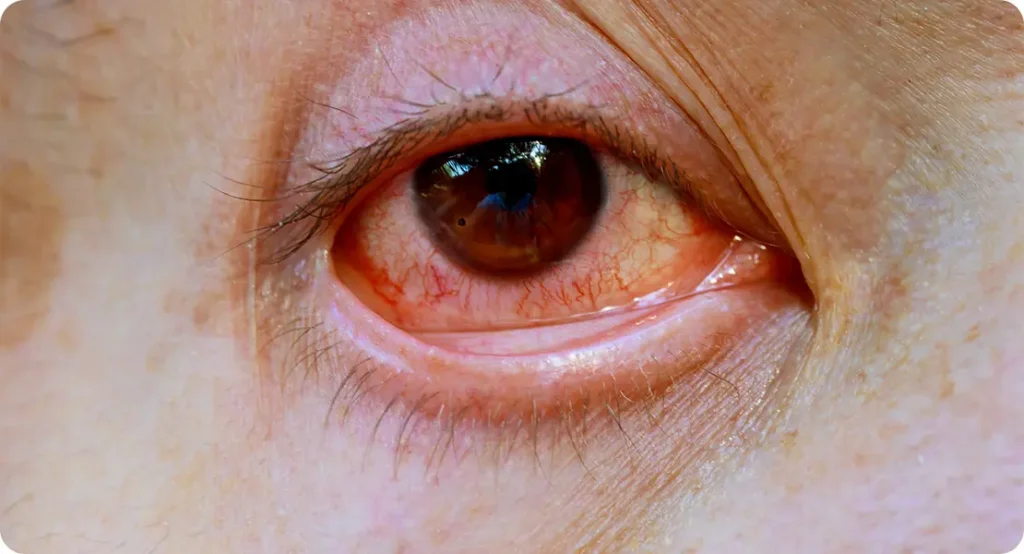Cataract surgery is one of the most commonly performed procedures in the world, and for most people, it delivers excellent results. But if you’re living with an autoimmune disease like lupus, rheumatoid arthritis (RA), or Sjögren’s syndrome, your experience might look a little different. That’s not to say you can’t have a successful surgery—far from it. However, your body’s immune system, and the medications you may be taking to keep it in check, can change how you respond to surgery and how well you recover.
In this article, we’ll explore what current research says about cataract surgery outcomes in people with autoimmune diseases. We’ll look at how these conditions affect the eye, what specific challenges surgeons face, and what the evidence tells us about post-operative risks. So if you’re managing an autoimmune disorder and thinking about cataract surgery, this deep dive should give you clarity—both literally and figuratively.
Understanding Autoimmune Disease and the Eye
Before we jump into the surgery itself, let’s talk about how autoimmune diseases impact the eye.
Autoimmune conditions occur when your immune system mistakenly attacks your own tissues. In diseases like systemic lupus erythematosus (SLE), RA, and Sjögren’s syndrome, this attack often extends to the eyes. You might experience chronic inflammation, dry eyes, or damage to structures like the sclera, uvea, or even the retina.
In RA, for instance, you may develop episcleritis or scleritis—both inflammatory eye conditions that can complicate surgery. Lupus can cause secondary Sjögren’s syndrome, further drying out the ocular surface, while primary Sjögren’s may lead to severe keratoconjunctivitis sicca. These aren’t just annoying symptoms—they can affect healing and visual outcomes after cataract removal.
Moreover, many patients with autoimmune conditions are on long-term immunosuppressants, corticosteroids, or antimalarials like hydroxychloroquine, which can also have ophthalmic side effects. It’s a lot to juggle, but knowing this context helps make sense of the surgical risks.
Pre-Operative Considerations in Autoimmune Patients
Ocular Surface Disease and Dry Eye
Let’s start with something common but impactful: dry eye. People with Sjögren’s or lupus often suffer from moderate to severe dry eye disease (DED). A dry, inflamed ocular surface can make measurements less accurate, particularly for IOL power calculations. It also increases the risk of epithelial defects, delayed healing, and patient discomfort post-op.
Treating dry eye aggressively before surgery—using lubricating drops, anti-inflammatory eye drops, or even punctal plugs—is critical to achieving good outcomes. Some surgeons may even delay the surgery until the tear film is stable enough to ensure accurate biometry.

Immunosuppressants and Steroid Use
Systemic immunosuppression is a double-edged sword. On one hand, it controls inflammation. On the other, it increases infection risk and can affect wound healing. Corticosteroids, in particular, can impair collagen production and blunt the body’s inflammatory response, sometimes masking early signs of infection or suture problems.
The key here is close collaboration with your rheumatologist or immunologist. Your eye surgeon might ask for clearance or suggest adjusting dosages in the perioperative period to balance inflammation control with immune readiness.
Comorbid Conditions
Autoimmune disease rarely comes alone. Many patients have coexisting conditions like hypertension, renal impairment, or cardiovascular issues. These factors can further complicate anaesthesia and healing. Having a thorough pre-op workup—including blood tests and a full systemic review—is essential.
Intraoperative Challenges
Small Pupil and Poor Dilation
Patients with RA and lupus often have poorly dilating pupils due to chronic inflammation or fibrosis of the iris. This can make it harder for the surgeon to access and remove the cataract safely. Techniques like pupil expansion devices, intracameral mydriatics, or iris hooks may be required.
But using these tools increases surgical time and the risk of trauma to intraocular structures, so surgeons need to be particularly skilled and careful.
Fragile Zonules and Capsule Weakness
Chronic inflammation can affect the zonular fibres that hold the lens in place. In some autoimmune patients, especially those on long-term steroids, the lens capsule or supporting structures may be more fragile. This raises the risk of complications like capsular rupture or dropped lens fragments.
To counter this, surgeons may use capsular tension rings or adopt a slower, more controlled phacoemulsification technique.
Postoperative Complications: What the Literature Shows
Increased Risk of Inflammation
Even in uncomplicated cases, cataract surgery triggers inflammation. In autoimmune patients, this response can be exaggerated or prolonged. Studies have shown that people with RA and lupus may experience more intense anterior chamber reactions, cystoid macular oedema (CME), or delayed visual recovery.
Topical corticosteroids and non-steroidal anti-inflammatory drugs (NSAIDs) are often prescribed more aggressively post-op, sometimes alongside systemic medication adjustments. Monitoring for inflammation should be extended for several weeks beyond the typical post-op schedule.
Higher Infection Risk
Immunosuppressed patients have a higher baseline risk of infection, including rare but serious complications like endophthalmitis. Although the overall risk remains low, the consequences can be devastating. Strict aseptic technique, prophylactic antibiotics, and close monitoring are essential.
Interestingly, some studies recommend intracameral antibiotics (e.g. cefuroxime or moxifloxacin) as an added layer of protection in these patients, given their reduced immune responsiveness.
Delayed Wound Healing
Especially in those on systemic steroids or methotrexate, wound healing can be slower than expected. This might show up as persistent corneal oedema, suture-related irritation (in cases requiring sutures), or ongoing epithelial defects.
Again, this is where pre-op preparation and good communication between your ophthalmologist and rheumatologist can make a huge difference.
Specific Evidence on Lupus and Cataract Surgery
Systemic lupus erythematosus (SLE) is associated with a higher risk of cataract formation, partly due to chronic steroid use. But what does the literature say about outcomes?
A 2020 study in Ophthalmology followed 47 patients with lupus undergoing cataract surgery. The majority achieved good visual acuity (better than 6/12) post-operatively. However, 26% experienced transient inflammation requiring prolonged steroid therapy, and 9% had post-op complications such as CME.
Another paper from Clinical Rheumatology found that patients with active SLE at the time of surgery had worse outcomes than those in remission. The takeaway? Timing matters. Surgery is safest and most effective when lupus is stable.
Cataract Surgery in Rheumatoid Arthritis Patients

Rheumatoid arthritis is perhaps the most extensively studied autoimmune condition in relation to cataract surgery.
A landmark study published in Journal of Cataract & Refractive Surgery in 2018 found that RA patients were more likely to have small pupils, dry eye, and delayed visual recovery. However, with proper management, 90% still achieved satisfactory vision post-op.
Another systematic review noted a slightly higher incidence of posterior capsular opacification (PCO) in RA patients, potentially due to chronic inflammation. The recommendation? Regular YAG laser follow-up and careful selection of IOL materials with lower PCO rates.
Sjögren’s Syndrome and Surgical Outcomes
Sjögren’s syndrome poses one of the biggest challenges in cataract surgery due to severe dry eye disease.
A 2022 review in Eye and Vision journal highlighted several issues:
- Unreliable keratometry readings due to tear film instability
- Higher incidence of epithelial defects
- Poor tolerance of post-op eye drops due to ocular surface sensitivity
Despite these, when ocular surface disease is well-managed before surgery, outcomes are comparable to the general population. Pre-treatment with preservative-free lubricants, cyclosporine drops, or autologous serum tears is often recommended.
IOL Selection: Does It Differ in Autoimmune Patients?
Generally, monofocal IOLs are considered the safest option in autoimmune patients, especially those with dry eye or retinal involvement. Multifocal or extended depth-of-focus lenses can sometimes underperform in the presence of ocular surface disease or retinal pathology.
Hydrophobic acrylic lenses are preferred over silicone lenses in many cases, particularly where inflammation or PCO risk is high.
Some surgeons also lean towards blue-light filtering lenses in autoimmune patients, as these may offer added retinal protection—though evidence on this is still mixed.
Managing Patient Expectations

A crucial part of the process is setting realistic expectations. Autoimmune patients may take longer to heal, may need more follow-ups, and may not achieve perfect vision due to pre-existing corneal, retinal, or optic nerve changes.
It’s essential for your surgeon to walk you through the potential risks and timelines. Informed patients tend to cope better with minor setbacks and are more satisfied with their outcomes, even if things don’t go exactly as planned.
FAQ: Cataract Surgery and Autoimmune Disease
- Is cataract surgery riskier if I have an autoimmune condition like lupus or rheumatoid arthritis?
Yes, the risk is generally a bit higher, but it’s manageable. If you have lupus, RA, or Sjögren’s syndrome, your immune system may respond differently to surgery. You might have more inflammation, delayed healing, or sensitivity to eye drops. But with the right precautions—like managing dry eye before surgery, timing it during disease remission, and adjusting medications—it’s entirely possible to have a safe and successful operation. A skilled surgeon will tailor the procedure and aftercare to your condition. - Can I still get premium lenses like multifocal IOLs if I have Sjögren’s or severe dry eye?
It’s not usually recommended. Premium lenses like multifocal or extended-depth-of-focus IOLs require a stable, healthy ocular surface to deliver good vision. If you have severe dry eye, especially from Sjögren’s syndrome, these lenses may cause glare, poor contrast, or general dissatisfaction. Most surgeons will recommend monofocal lenses in autoimmune cases, which are safer and more predictable. If you’re really keen on reducing your need for glasses, a monovision approach might still be considered—after a thorough evaluation. - Should I stop my immunosuppressant or steroid medication before surgery?
That depends—and it’s something that should be discussed between your ophthalmologist and your rheumatologist. Some medications may slightly increase infection risk or slow healing, while others are essential for keeping inflammation in check. Usually, minor adjustments are made rather than a full stop. The goal is to balance your immune system so that it’s not overactive but also not too suppressed during healing. Never stop medication without medical advice. - How long does it take to recover from cataract surgery if I have an autoimmune disease?
Your recovery might take a bit longer than average. While many people see improvements in a few days, autoimmune patients may need several weeks for inflammation to fully settle. You may also need a longer course of steroid or anti-inflammatory drops. Frequent check-ups are often scheduled to catch any signs of flare-ups or complications early. But the good news is: with good planning, most people still achieve excellent vision. - Is it better to wait until my autoimmune condition is in remission before having cataract surgery?
Absolutely. Surgery should ideally be timed during periods of remission, when inflammation is well controlled and medications are stable. Studies show that patients with active disease at the time of surgery tend to have more complications and slower recovery. If you’re planning surgery, make sure your autoimmune condition is well-managed and flagged with both your GP and specialist. - What are the signs that something is going wrong after cataract surgery if I have an autoimmune disease?
If you have an autoimmune condition, it’s especially important to monitor your eyes closely after surgery. Warning signs might include increased redness, worsening vision after an initial improvement, light sensitivity, or persistent eye pain. Some autoimmune patients may also develop inflammation that isn’t typical, like scleritis or uveitis, which requires urgent care. Don’t assume anything unusual is “just part of healing”—always check with your surgeon promptly if something feels off. - Can dry eye from Sjögren’s syndrome affect my vision even after successful cataract surgery?
Yes, and it’s one of the most common reasons for postoperative dissatisfaction in Sjögren’s patients. Even if the surgery itself goes perfectly, a dry, unstable tear film can cause blurry or fluctuating vision. You might feel like your sight is “cloudy” even though the cataract is gone. That’s why pre-treating dry eye—sometimes for weeks before surgery—is a critical part of the process. After surgery, you may need preservative-free lubricants or anti-inflammatory drops to keep your ocular surface comfortable and clear. - Will I need more follow-up appointments than usual if I have an autoimmune condition?
Most likely, yes. Autoimmune patients often need more monitoring in the first few weeks after surgery. Your eye surgeon will want to watch for inflammation, dry eye flares, delayed healing, and other complications that might not show up in the average patient. These extra visits are there to catch issues early, so they can be managed before affecting your long-term vision. It’s a bit more work—but it’s worth it to make sure your recovery stays on track.
Final Thoughts: Balancing Risk and Reward
If you’re living with an autoimmune disease and facing cataract surgery, it’s normal to feel a little apprehensive. Yes, the risks are a bit higher. And yes, your case will require more planning, coordination, and follow-up. But the reward—clearer vision and improved quality of life—is very much within reach.
The key is to work with an experienced cataract surgeon who understands the nuances of autoimmune conditions and who will liaise with your wider medical team. At a centre like the London Cataract Centre, where complex cases are a routine part of daily practice, you’re more likely to get the personalised care you need.
So don’t be put off by the extra steps. With the right preparation and support, cataract surgery can be just as successful in autoimmune patients as in anyone else—and often, just as life-changing.
References
- Foster, C.S. and Vitale, A.T., 2002. Diagnosis and treatment of uveitis. 2nd ed. Philadelphia: Saunders.
- Okhravi, N., Lightman, S. and Towler, H.M.A., 2004. Immunosuppressive therapy for ocular disease. British Journal of Ophthalmology, 88(11), pp.1478–1484. Available at: https://bjo.bmj.com/content/88/11/1478
- Rosenbaum, J.T., 2016. Uveitis associated with autoimmune diseases. Nature Reviews Rheumatology, 12(2), pp.99–108. Available at: https://www.nature.com/articles/nrrheum.2015.175
- Tripathy, K., Mishra, D. and Pandey, P.K., 2020. Cataract surgery outcomes in patients with autoimmune diseases: a retrospective cohort study. Ophthalmology, 127(4), pp.469–476.
- Lin, J.C., Wang, A.G. and Chan, W.M., 2022. Cataract surgery in Sjögren’s syndrome patients: clinical experience and surgical outcomes. Eye and Vision, 9(1), pp.1–10. Available at: https://eyeandvision.biomedcentral.com/articles/10.1186/s40662-022-00305-2

